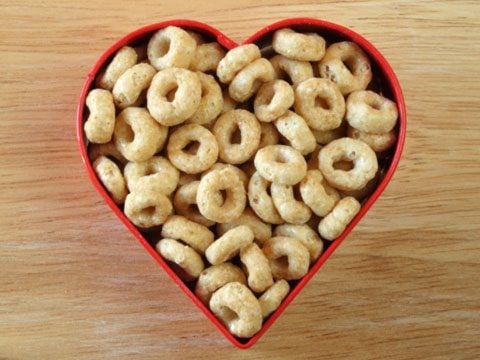8 Biggest Red Flag Words on Packaged Foods
- by , on Fri Sep 16, 2011 7:59am PDT

1. Health claims
Could a probiotic straw give immunity protection to a child? Are Cheerios a substitute for cholesterol-lowering drugs? The FDA doesn't think so. Foods are not authorized to treat diseases. Be suspicious of any food label that claims to be the next wonder drug.
2. Flavored
Both natural and artificial flavors are actually made in laboratories. But natural flavorings are isolated from a natural source, whereas artificial flavorings are not. However, natural flavors are not necessarily healthier than artificial. According to Scientific American, the natural flavor of coconut is not from an actual coconut, as one might expect, but from the bark of a tree in Malaysia. The process of extracting the bark kills the tree and drives up the price of the product when an artificial flavoring could be made more cheaply and more safely in a laboratory. That natural strawberry flavor you love? It could be made from a "natural" bacterial protein. Mmmm!
3. Drink and cocktail
The FDA requires that the amount of juice be labeled on a package when it claims to contain juice. The words drink and cocktail should have you checking the label for percentages and hidden sugars. But beware: even a product labeled 100 percent juice could be a mixture of cheaper juices, like apple juice and white grape juice.
100 percent pure products such as orange juice can be doctored with flavor packs for aroma and taste similar to those used by perfume companies. By now we all know about the use of flavor packs added back to fresh-squeezed orange juice like Tropicana and Minute Maid.
5. Nectar
The word nectar sounds Garden of Eden pure, but according to the FDA it's just a fancy name for "not completely juice." The FDA writes: "The term 'nectar' is generally accepted as the common or usual name in the U.S. and in international trade for a diluted juice beverage that contains fruit juice or puree, water, and may contain sweeteners." The ingredient list of Kern's, a popular brand of peach nectar, contains high fructose corn syrup before peach puree.
6. Fat free
PAM cooking spray and I Can't Believe It's Not Butter spray are fat free if used in the super miniscule and near impossible serving sizes recommended. PAM must be sprayed for ¼ of a second and the small I Can't Believe It's Not Butter spray bottle contains over 1,000 servings! Even then it's not fat free it's just below the amount that the FDA requires to be identified on labels.
This designation means free of sucrose not other sugar alcohols that carry calories from carbohydrates but are not technically sugar. Sugar alcohols are not calorie free. They contain 1.5-3 calories per gram versus 4 calories per gram for sugar. Also, certain sugar alcohols can cause digestion issues.
8. Trademarks
Dannon yogurt is the only company allowed to use the bacteria in yogurt called bifidus regularis because the company created its own strain of a common yogurt bacterial strain and trademarked the name. Lactobacillus acidophilus thrives in all yogurts with active cultures. Although Activa is promoted as assisting in digestion and elimination, all yogurts, and some cheeses, with this bacteria will do the same thing.



